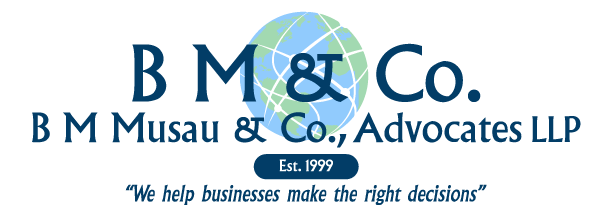In the healthcare sector, due diligence and risk assessment are crucial components of any transaction, whether it’s a merger and acquisition (M&A), partnership, or investment. These processes are essential for identifying potential risks and ensuring compliance with regulatory standards, thereby protecting both parties involved in the transaction. Effective due diligence and risk assessment similarly ensure the success and sustainability of health care transactions. This article outlines best practices for conducting due diligence and risk assessment in healthcare transactions in Kenya, drawing insights from global practices and local regulatory requirements.
Understanding Due Diligence
Due diligence is a comprehensive process that involves the buyer thoroughly examining the target’s business, operations, and financial health before making a transaction. It starts early in the process and continues until the deal is closed. The buyer requests documentation and information from the seller to understand the target company better and evaluate the opportunities and risks associated with the potential transaction.
Key Areas of Due Diligence in Healthcare
- Legal and Regulatory Compliance
In healthcare transactions, legal and regulatory compliance is paramount. This involves assessing the target entity’s compliance with applicable laws and regulations, including licensing requirements, healthcare standards, data protection as well as anti-corruption laws. Any past or ongoing legal disputes, regulatory sanctions and compliance issues should be identified. Legal due diligence should also assess any existing agreements and relationships for regulatory compliance.
- Financial and Operational Review
A thorough financial and operational review is essential to understand the target’s financial health, operational efficiency, and potential risks. This involves examining the target’s financial statements including revenue, expenses, and profitability, operational processes, and any potential liabilities. The adequacy of financial controls and assess any outstanding liabilities such as debt obligations.
- HR and IT Assessment
Assessing the target’s human resources and information technology infrastructure is crucial. This involves evaluating the target’s workforce, IT systems, and data security measures to ensure they meet the buyer’s standards and comply with industry regulations. Similarly the target entity’s operational processes and systems, including staffing levels, supply chain management, and information technology infrastructure ought to be assessed to identify any inefficiencies or gaps that could impact the quality of care or financial performance.
- Commercial Due Diligence
Commercial due diligence involves examining the target’s contracts, customer relationships, and market position. This helps the buyer understand the target’s competitive landscape and potential for growth.
- Infrastructure Quality:
Assess the quality of care provided by the target entity, including patient outcomes, safety protocols, and clinical governance structures. Review any available data on patient satisfaction, and clinical audits.
- Reputation and Stakeholder Relationships:
Consider the target entity’s reputation within the community and its relationships with key stakeholders, such as patients, employees, suppliers, and regulators. Identify any issues that could affect the organization’s credibility or long-term viability.
Best Practices for Due Diligence and Risk Assessment
Due diligence and risk assessment ought to be carried out in an organized manner for the highest efficiency;
-
Utilize a Structured Approach
Adopting a structured approach to due diligence and risk assessment can help ensure that all critical areas are covered. This includes using a due diligence checklist that covers legal, financial, HR, IT, and commercial aspects as highlighted above.
-
Engage Experts
Engaging legal, financial, and technical experts can provide valuable insights and help identify risks that may not be apparent to the acquiring entity. These experts can also assist in navigating the complex regulatory landscape of healthcare transactions in Kenya.
-
Timely and Cost-Effective Process
Conducting due diligence and risk assessment in a timely and cost-effective manner is essential. This can be achieved by using efficient tools and platforms in technology which can streamline the due diligence process and provide real-time insights.
What next? Mitigating Risks and Negotiating Terms:
Once potential risks have been identified through due diligence, the next step is to develop strategies to mitigate these risks and negotiate favorable terms for the transaction. This may involve implementing corrective actions to address compliance gaps, restructuring financial arrangements, or renegotiating contractual terms. It is essential for parties to engage experienced legal and financial advisors to guide them through this process and ensure that their interests are protected.
Conclusion
In the healthcare sector in Kenya, conducting thorough due diligence and risk assessment is crucial for ensuring the success of any transaction. By following best practices and focusing on key areas such as legal and regulatory compliance, financial and operational review, HR and IT assessment, and commercial due diligence, parties involved in healthcare transactions can mitigate risks and ensure compliance with regulatory standards.
This is a general write-up on the due diligence and risk assessment expected in healthcare transactions. For any specific issues or transactions, please contact B M Musau and Company Advocates LLP.

I am a Kenyan Advocate and the Managing Partner of B M Musau & Co., Advocates, a position I have held since 1999. My work encompasses regulatory reforms, reduction of administrative burdens, the structure of business entities, joint ventures, acquisitions, banking, foreign investment and other general corporate areas

Write a comment: